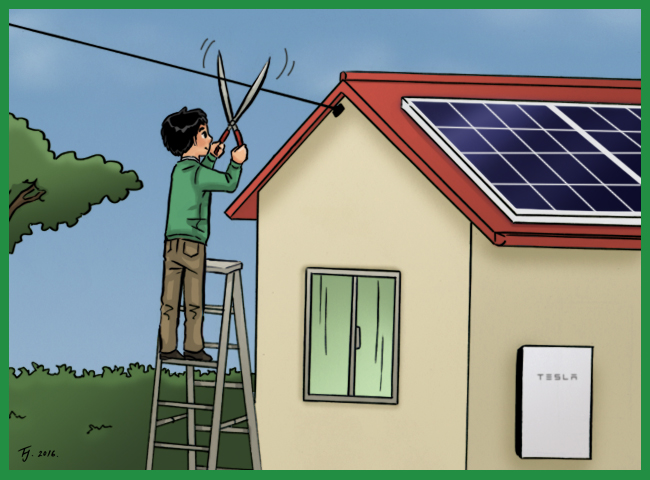
Thinking of getting a Powerwall 2 and taking yourself off grid? Then you need to read this first.
Note from Finn:
Since this post was published Tesla have canned the DC Powerwall 2 in Australia. We will now only be able to get an AC Powerwall 2. A regular AC coupled battery is no good for off grid because it can’t talk to the solar inverter to balance energy demand and supply. So if you live in Australia and want to go off grid do not use a Powerwall 2.
A long time ago, back in the days before we knew how lame the original Powerwall was compared to its hype or how good the Powerwall 2’s hype is compared to the original Powerwall, I wrote about whether or not my parents in sub-tropical Queensland could save money by going off-grid using lead-acid battery storage.
My conclusion was they could not save money even under almost ideal circumstances. The benefit of staying on-grid and receiving even a low feed-in tariff for surplus solar electricity was too great to make saying sayonara to the grid connection wire worthwhile.
But now Tesla says the Powerwall 2 will will be available in February and they have given its technical specifications, warranty, and price. This has allowed us to determine its warranted cost per kilowatt-hour is 30% less than its nearest competitor and half the price per-kWh of the Powerwall 1.
The dramatic price cut means that, in some very specific situations, adding a Powerwall 2 to a grid connect solar system, may pay for itself. Just.
That got me thinking. Does the impending release of the Powerwall 2 make it finally possible for my parents to save money by going off-grid?
Well, I’ve redone the calculations and my conclusion is – hell no. Even if I fudge their details to make their circumstances almost ideal it costs a small fortune to go-off grid with a Powerwall 2.
If that’s all you wanted to know, feel free to stop reading now. But some people are faced with the decision between living off-grid or paying a small fortune to get grid electricity connected to their properties. They may be interested in which small fortune is the smallest. So if you want details then wrap your eyes around what I’ve written down under.
My Parents’ Details
My parents live in an old Queenslander, which is appropriate on account of how that’s what they are. Their situation is already fairly ideal for going off-grid, but I putting my thumb on the scales and altering some details to favour the Powerwall 2 so we can see how well it does in a pretty much best case scenario. So if my parents can’t save money by going off-grid with a Powerwall 2 we can be pretty sure no one can.
Location
My parents live in sub-tropical rural Queensland in an area that, as far as I am aware, has the least difference between winter and summer solar output of any location in Australia, which is very handy for off-grid living and will help keep their need to use a generator during periods of bad weather to a minimum.
Electricity Consumption
In reality my parents don’t use a lot of electricity. But because I want to see how the Powerwall 2 fairs under the best possible circumstances, I am going to assume they have a couple of annoying relatives move in with them and increase their electricity consumption up to 18.4 kilowatt-hours a day which is the average for a 4 person household in their area. This comes to 6,720 kilowatt-hours a year. I will also assume that if off-grid they would use an average of 6 kilowatt-hours of battery storage a night.
Rooftop Solar Size
My parents don’t actually have a maxed out rooftop solar system because I was too cheap to buy them one. But I’m going to pretend they have a 5 kilowatt inverter with 6.6 kilowatts of panels, which is just short of the largest system permitted in their area without an export limiting inverter or device. Installations of around this size are now not uncommon in their area, so it is not unreasonable to assume they have one.
According to PVwatts it will produce over 10,900 kilowatt-hours when new. As solar systems slowly decline in output over time I’ll assume it will produce an average of 10,500 kilowatt-hours a year for the life of the Powerwall 2. If it supplies 12 kilowatt-hours of my parents electricity consumption a day they will export 6,117 kilowatt-hours to the grid a year. With the current feed-in tariff of 7.45 cents this will reduce their electricity bills by $456 a year.
Marginal Cost Of Grid Electricity
My parents are on tariff 11 and currently pay 27.1 cents per kilowatt-hour. This is less than the 27.9 cents they were paying 18 months ago. I am going to assume the cost of electricity will remain constant in real terms and I am going to use constant dollars for all my calculations. This simply means all dollar values will be given in today’s money and not adjusted for inflation. I am doing this partly because it makes the presentation of information clearer, but mostly because its easier.
Daily Supply Charge
My parents are required to pay 98.5 cents a day for the privilege of being connected to the grid whether they use electricity or not. This is up from the 91.8 cents they used to pay 18 months ago. You might say, “Well that’s not so bad! That increase was only 3 times the rate of inflation!” But actually, it’s a lot more bad than that. In addition to an increased daily supply charge, my parents now have to pay additional fees called, “meter services charges“.
Meter Services Charges
I can only imagine that people were sitting around in the state owned electricity distributor in Queensland, playing cards, when one of them suddenly realized, “Oh my god!1 Electricity meters cost money!” As a result, a huge new charge suddenly reared up before them out of nowhere and they had no choice other than to add it to people’s electricity bills.
You might think that if the cost of supplying and reading electricity meters used to be part of the daily supply charge but then became its own separate charge then that would result in the daily supply charge dropping. But apparently that’s not the way things happen in Queensland. The daily supply charge was increased and brand new meter services charges were added. They come to 9.8 cents a day for a home without solar or 16.7 cents for those with rooftop solar.
It’s almost as if they want people to go off-grid, isn’t it?
With the daily supply charge and the new metering services charges my parents have to pay a minimum of $1.15 a day before they use any electricity. That comes to $420 a year.
Yearly Electricity Bill
With a 6.6 kilowatt solar system my parents might only use around 6.4 kilowatt-hours of grid electricity a day making their year grid consumption about 2,340 kilowatt-hours. This would make their annual electricity bill around $600 after the reduction from the feed-in tariff. Over 15 years this would total $9,000.
Cost Of Capital
While my parents refuse to tell me details of their finances, apart from the fact they intend to leave nothing but bills when they die, I am going to assume they have money sitting in a term deposit in the bank. Currently a term deposit will provide a real return after inflation of about 1.5% and I will use that as their cost of capital.
Generator Costs
With my parents’ average consumption of 18.4 kilowatt-hours a day and a solar system that will only average around 22 kilowatt-hours output in winter, then with a single Powerwall 2’s storage capacity even one day of overcast skies is likely to be enough to completely drain it and require the use of a generator. This will push their generation costs through the roof.
However, because I want to look at a best case scenario, I am going to assume that a large portion of their electricity use is for air conditioning, which they will only use during the day when the sun is shining. This means they will on average use more electricity on clear days when solar production will be high and less on cloudy ones.
In addition, I will assume my parents will take action to consume less electricity during periods of cloudy weather, further reducing the need to use a generator. For example, playing cards when it is cloudy instead of fighting each other with high voltage cattle prods.
So with these assumptions, and because only a small generator will be required and because ones that aren’t complete rubbish can be bought for a reasonably low price, I will allow for a very low figure of only $150 a year for generator costs, including fuel.
Cost Of Inconvenience
Living off-grid with a Powerwall 2 is not the same as living on-grid. It will involve a significant amount of inconvenience. Care will have to be taken not to use too much power at once or drain the batteries. Generators can be both noisy and smelly and are potentially dangerous when used incorrectly. They can even be dangerous when used correctly. Many insurance claims have resulted from generators turning on people.
But I am going to assume that overall my parents don’t have a problem living off-grid. They may even enjoy it. But to be realistic, I guess I should assume that one of them loves it and the other hates it so they cancel each other out. That’s the way it usually seems to go with them.
Powerwall 2 Details
Tesla recently released the technical details and warranty of the Powerwall 2 and you can read all about them here. Important points with regard to my parents going off-grid with one are as follows:
Powerwall 2 Lifespan
I am going to be optimistic and assume the Powerwall 2 will continue to operate for 5 years past its maximum warranty period and not fail until it is 15 years old.
Effective Battery Capacity
A new Powerwall 2 can supply 13.5 kilowatt-hours of stored DC electricity. With an inverter that has an average efficiency of 96% that will come to 13 kilowatt-hours of AC power the home uses. Tesla says their AC Powerwall 2 can provide 13.2 kilowatt-hours using its built in battery-inverter, but I think it is extremely likely the AC version won’t be suitable for off-grid use and the DC version will have to be used instead. This will require a compatible multimode inverter, also known as a hybrid inverter. We have no information on which ones may be compatible yet, but expecting one to operate at around 96% efficiency is reasonable.
Battery Deterioration
Because my parents will cycle the Powerwall 2 considerably less than 0.78 times a day, the warranty will last for its maximum length of 10 years. According to the warranty terms it will have at least 70% of its original capacity left by its end.
Because my parents may only draw an average of 6 kilowatt-hours of stored electricity overnight and so cycle it less than an average of 0.55 times a day, I am going to be optimistic and assume it will have 80% of its original capacity left after 15 years and will still be able to provide 10.4 kilowatt-hours of AC power when fully charged, after inverter losses are included.
Powerwall 2 Cost
According to Tesla, the cost of a Powerwall 2 plus installation will start from $10,150. They’ve changed this figure twice so far, but I’ll assume their latest figure is correct.
As you may recall, I mentioned my parents can only save $9,000 in electricity bills over 15 years by going off-grid so there is clearly no way they can save money by going off-grid with a Powerwall 2. But it gets even worse.
The $10,150 installation cost is a starting point. While an on-grid AC Powerwall 2 may be installed for that much, I very strongly suspect that for off-grid use a DC Powerwall 2 and a compatible multimode inverter will be required. A 5 kilowatt one could easily add $3,500 or more to the cost. If it is an extra $3,500 this would bring the installed cost of an off-grid Powerwall 2 up to $13,650.
If there are any optimistic people out there who think a multimode inverter won’t be required, or Tesla will provide one or free, or the heavens will open up and a chorus of angels will deposit one on the front lawn, that’s fine with me. But it still won’t be enough to make going off-grid with a Powerwall 2 pay for itself.
Calculations
To cut a long calculation short, with my parents’ cost of capital after inflation of 1.5%, an assumed Powerwall 2 lifespan of 15 years, an additional $3,500 for a multimode inverter, and $150 a year to run a generator, the total cost to them of going off-grid will come to around $18,500.
Because they would only save around $9,000 dollars in electricity bills over this period, going off-grid with a Powerwall 2 using the assumptions I have given would cause a total loss of around $9,500.
A Smaller Solar System Doesn’t Help
Giving my parents a smaller solar system does not help. If they had installed a smaller solar system they might have more money left over to invest in a Powerwall 2, but spending less on something that was saving them money so they’d have more money to spend on something that would lose them money is about as financially stupid as it is possible to get.
The assumptions I used can be altered, but they are already very optimistic and no realistic changes work to make going off-grid with a Powerwall 2 pay for itself. For example, if you think the price of grid electricity is going to increase, then the time to go off-grid would be when the cost is high enough to make it pay for itself, not before. Some locations can have even higher grid electricity prices or daily supply charges, but they generally also have lower and less constant levels of sunshine and that will increase generator costs.
It May Work For People Who Have To Pay For Grid Connection
In my example I assumed my parents were already on-grid. But if they were building a new house and had to pay over $9,500 to be connected to grid electricity, then provided all the assumptions I used hold true, it would be worthwhile for them to go off-grid with a Powerwall 2.
But the assumptions I used were very optimistic, especially the cost of capital. If instead of having money in the bank, they have a home loan to pay off at a real interest rate of 3.5% and I use that as their cost of capital, then choosing to go off-grid with a Powerwall 2 increase the total loss to around $14,100.
So while there is definitely a point where it will pay to go off-grid with either a Powerwall 2, many people, even those who would be quite comfortable living off-grid with a single Powerwall 2, may be better off paying $15,000 or more to be connected to the grid.
Going Off-Grid Is Not Good For The Environment
Going off-grid means that any surplus electricity generated by your rooftop solar system goes to waste and is not sent into the grid where it will reduce fossil fuel generation. This makes going off-grid a bad choice from an environmental point of view and for many people this will be an important consideration.
It Doesn’t Come Close To Paying For Itself
There is no way in hell going off-grid with a Powerwall 2 can pay for itself at the moment. Its cost would have to fall by more than half for it to be worthwhile, even under very favorable circumstances. Maybe the Powerwall 3 will be able to manage that, but even under very favorable circumstances the Powerwall 2 is more than two times too expensive.
Footnotes
- In Queensland this would be Gilgamax the god of carbon. ↩

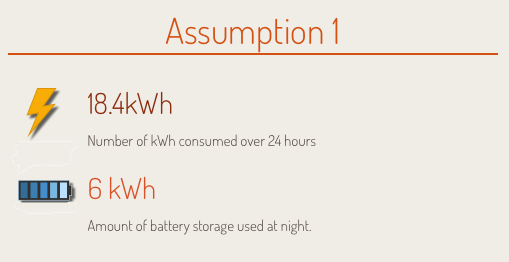
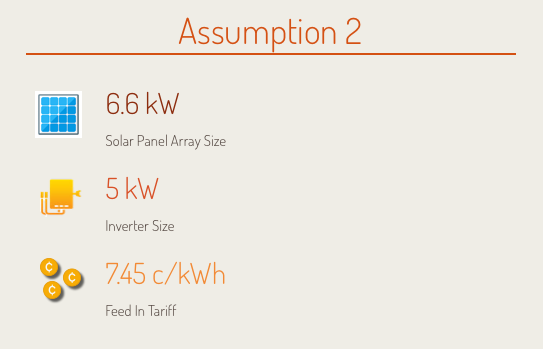
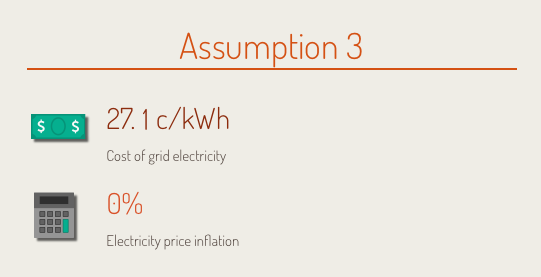
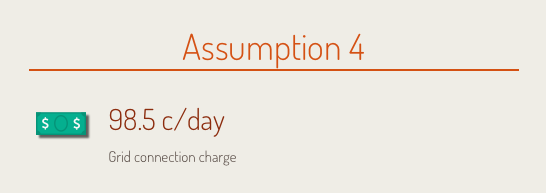
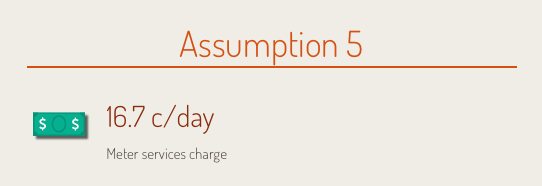


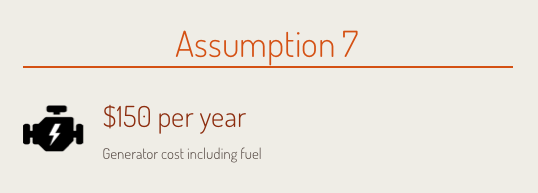


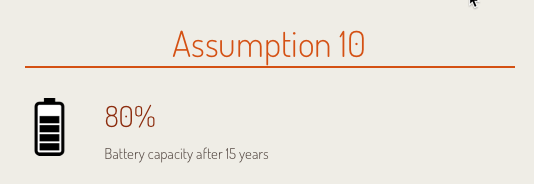
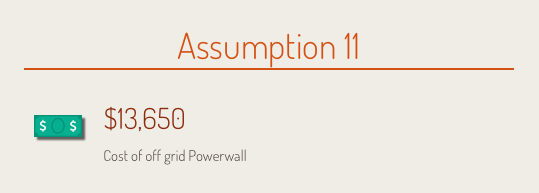
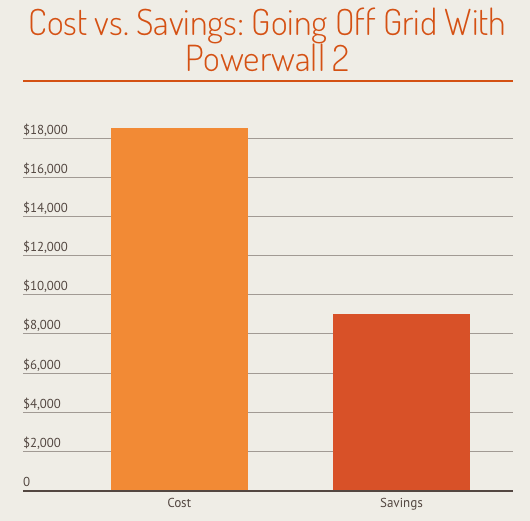
 RSS - Posts
RSS - Posts



The Australian Government is about to change the assets test on which the age pension is calculated. Converting cash or investments into residential home improvements that might include Solar PV and Storage [not accessed as an asset] may result in minimising any loss in fortnightly pension entitlement. You can get quite a different financial outcome for Solar PV and Storage based on its cash value when you add back any loss of age pension based on the asset assessment about to be introduced. Of course there will be those were there is a change to pension benefit but it is worth while doing the calculation based on the individual circumstances of an individual/s
Good day Ronald,
What a fantastic piece of work… and I am with you all the way,,,I totally agree with you on all points. People in rented houses and people in units will not have PV and thus it will be difficult without a revolution to increase the cost of grid power significantly but even so, staying on the grid has many advantages.
Regards
john nielsen, Silkwood
Pehapes you might like to see the business model why a landloard might install solar and share the benefits with the renter.
Thanks very much for the quick response Ronald … even if the answer is somewhat depressing.
A couple of minor points;
1. I agree energy should never be wasted but excess in an off grid (and perhaps also in grid connect) can always be diverted to heat – both for hot water and in my evil plan hydronic heating by way of a big massively insulated tank with copper coil heat exchangers. A solar powered heating element – heat pumps seem to be an expensive nightmare from some I’ve spoken to – as a backup to direct solar hot water panels and perhaps wood fired backup as well.
2. The longer we go those bad costs for simply being connected to the grid will only grow – massively so as soon as it becomes really economical for the great rush to disconnect which is surely coming (and the cost of maintaining the grid is suddenly shouldered by quite a few less). Yes, I know …wait till that happens …. but by then the FIC won’t allow you to disconnect 😉
So the next question 😉
I’m in paradise aka Tassie (yep I know makes the numbers look a lot worse) and we do normally cop our share of wind down here in the roaring 40s – but nothing like we have had for most of this year. I know most people just say add more pv – it’s cheaper, but thinking again of off grid is there a simple way of calculating the benefit or otherwise of adding a small wind gen to the mix? Apart from anything else on those really annoyingly depressing windy days (and of course nights) it would be a nice feeling at least, to be topping the tanks so to speak.
It would seem to me that the more ‘assumptions’ that one has to make, then the more dubious is the probability that going off grid is economically viable under the current circumstances.
The best strategy is to take it in small bites rather than trying to eat the whole thing at once. We run an Enphase 5.75 kW PV + an Enphase 1.2 kW Storage battery. The battery was installed in September 2016. So far the battery is contributing to consumption [daily average] about 1.02 kWH. We only purchased one [1] storage unit to be able to reasonably determine what storage capacity we would need to provide in order to cover the out of sunlight hours consumption. Our average daily feed in is about 8 kWh per day so at the moment it looks like 7.2 kW [six (6) 1.2 kW Enphase Batteries] might suit our purpose. We are waiting for Enphases pricing response to the Tesla Powerball 2 13.5 kW offering at $10,150 incl GST Installed. At the moment it does not make financial sense to spend $13,200 with Enphase 7.2 kW to get approximately half the storage capacity. Personally I think it works financially with an installed price including GST of $1,100 per unit. In the meantime we are simply monitoring how the market responds with storage pricing including Tesla, LG, Enphase and others.
We have a mate down in Victoria living in a shack of a property. He has a small solar array charging 12 volt batteries.
His hot water system and cooking is done with bottled gas.
His lighting was at that time, 12 years ago, 12 volt incondesant bulbs, very dull. Now LED lighting would be more economical and much brighter. TV and radio were all 12 volt.
He must have had a back up generator but it was not used over the week we stayed with him.
He seemed to be living comfortably. He ran a vineyard.
I would contemplate going to a 12 volt system and give these swindling power companies a complete miss.
As the old saying goes:- If ‘ifs’ and ‘ands’ were pots and pans there’s be no work for tinkers’ hands
Your ‘assumptions’ are so full of holes you’d keep a herd ( assuming they’re Irish!) of tinkers in work.
eg:- despite my several posts to the contrary (none of which have been disputed) why do you ‘assume’ the only~or best~ way to go offline is with a ‘powerwall’?
Connected to the grid it’s MUCH less cost-effective than a lead-acid storage system. And assuming you are able to use it in a stand-alone situation it STILL isn’t price-effective, given the price hugely inflated due to the huge number of gadget-addicts out there.
Equally irrational is the argument about ‘wasting the energy you don’t use and could feed into the grid’. In the first place your (ever decreasing) FiT wouldn’t even come close to paying for your (ever-increasing) ‘service-to-property’ charge alone ~ before you even switch on a light by which to read your electricity bill.
…And in the second place ( I can’t help asking:sorry!) why on earth would you install a system ~ even at today’s low prices ~ that produced more power than you needed/could use ……..just to be able to lose money by feeding it into the grid??
I’m in the middle of a legal brief, so ~ given my typing speed ~ had better get back to it. The good news is that the prosecution’s case has even more holes in it than the Powerwall arguments.
ps. I wouldn’t underestimate your parents’ skill at finding the best/cheapest way of getting what they want. They, like myself, grew up in a world where counting pennies wasn’t an embarrassing thing to do. (Hell ~ it was even a huge personal and social plus to have a sense of (eek!!) ‘discrimination’!
Quite right about the ‘assumptions’, ramjetski. But the ‘going off-grid’ assertion only applies to doing so with a ‘powerwall’. Stand-alone with lead-acid batteries is not only cheaper than either option, it’s been financially viable for probably a yer or more.
[with 6.6 kilowatts of panels, which is just short of the largest system permitted in their area without an export limiting inverter or device.] and that IS the REAL problem. Government-imposed regulations and bureaucracies meant to protect the old energy monopolies. As commenter Nielsen said, [ it will be difficult without a revolution]. Here in the USA, a pseudo-peaceful revolution has occurred with a nationalist win of the White House with Trump. Americans are hopeful that he will become the “regulation buster” president with his closet-patriot ideologies. I live out in the country and have almost 20,000-Watts of solar PV on my roof and barn — my utility is a member-owned co-op, so we are not heavily inundated with what we can and cannot do. Sadly, the rest of the world is all not under that same level of “freedom”. Populism is awakening all over the globe though. The old mainstream medias are dead or dying and new ones like Breitbart, Infowars and Drudge are becoming the real media outlets. The markets should be open with no limitations or regulations. I am a fan of Enphase’s modular AC batteries and hope that in the new year, they will get a ~600W unit that better addresses the demand-charge issue; still, I like the concept of a farm of modular, independent batteries giving me 100% fault-tolerance. Buying a single big Powerwall sounds great, but you don’t have true fault-tolerance unless you have a few of them. Power to the People.
Hi Malcolm,
About inverters: I use MPP Solar inverter, 5 kVA, 4000 Watt, pure sine wave, MPPT 80 Amp charger, ,,less than $1,000 on Ebay. You can couple two or more together if need be.
There are a couple of good ‘youtube’ on PV, one is a guy in WA ‘Justin Case’ who has a similar set up to mine, and another is a guy in the USA, name ‘Mark Kash’. Grid tie inverter without a grid ‘ the latter has a couple of dangerous issues, but principally a good setup.
Again, this is only for people intending to quit or minimize the grid use, as well as having the qualifications to do it, meaning, being able to draw up a wiring diagram of your proposed installation, purchase all the gear, and then seek a licensed contractor to wire it up for you..
I cannot see the cost benefit of those new types of batteries thus I will stick with my 157 year old technology ‘lead acid’ , but will anxiously continue reading about PW number 9.
About grid tie inverters: Any grid tie inverter can run without the utility grid. It has to see 240 Vac, 50 Hz, but doesn’t care where it comes from, it will sync with the source.
Ronald, I am very grateful for all your time and humour, as previously stated, great job. After considering a household of 4 people as you said, then perhaps 2 or 3 air cons at night,,, and that would mean at least 2 PW or more gen power would that be correct?
john nielsen, Silkwood.
Hi John. If the house was cooled down using solar power during the afternoon, then it would be possible to run an air conditioner off a single Powerwall 2 at night. But there would be definite limits. Towards the end of its warranty a Powerwall 2 might only be capable of supplying around 10 kilowatt-hours or less of usable storage. During a heatwave when an air conditioner might run continuously, a 2.4 kilowatt unit that is suitable for a medium sized room could completely drain the Powerwall 2 in 4 hours. As a single Powerwall 2 has a continuous power output of only 5 kilowatts it would obviously be difficult to run two air conditioner units of that size at the same time.
Provided people were careful, and perhaps set their air conditioners at a higher temperature than they’d prefer, they could use one or perhaps multiple very small air conditioners off a single Powerwall 2, but for multiple air conditioner units and anything approaching the convenience of being on-grid, then multiple Powerwalls would definitely be required. Running a generator could work around the problem to an extent, but it’s not a convenient option.
a modern 2.5kW aircon, uses around 500 watts per hour as the COP is almost 5.
Once the bedroom is cooled down, and at night as long as the room is insulated, it will use less than 500 watts per hour.
Yes, I messed up there. An air conditioner with 2.4 kilowatts of electricity consumption would be suitable for a large room or be part of a ducted system and much more than what a medium sized room would require. Thanks for pointing my mistake. It would be easier to run a small air conditioner off a Powerwall 2 than I said.
Unfortunately, like many Australians, my parents don’t have insulated rooms. They made an effort by putting insulation in their ceiling but if you lift up their rugs you can see the ground through the cracks in floor. Fortunately the floor ventilation is not a big problem as they don’t have an air conditioner. But it does make me wonder why they thought insulating the ceiling would be a good idea.
I am told that self contained solar powered roof space vents the allow hot air to escape to the environment can be effective. Of course there are also those that rotate in the breeze.
Fortunately one of the previous owners was smart enough to put a white roof on the house, which helps with the summer heat. (On satellite photos it makes the house look like it has been whited out for security reasons.) I don’t know what sort of roof ventilation it has, but I suspect there is an electric fan in the roof space connected to mains electricity.
Good analysis and no doubt correct from the consumer’s point of view, which is all you were trying to show. The total system costs of course include offsetting those fossil fuel emissions from staying on-grid, so would the equation change if you used the price of on-grid “green’ energy?
Well, I would say that since we shouldn’t increase CO2 concentrations in the atmosphere any further, there should be a price on carbon equal to the cost of removing it from the atmosphere. An optimistic estimate of this cost is $100 per tonne of CO2. This would add around 8 cents a kilowatt-hour to the cost of grid electricity, which would be more than enough to make a Powerwall 2 pay for itself for many large users of electricity in SA, WA, QLD, and NSW. But this price increase would be temporary as fossil fuels would be rapidly phased out in favor of renewables.
Using the lower price of retail green electricity, the effect won’t be so large but it would still greatly improve the economics of the Powerwall 2.
My understanding is that Ergon the sole energy supply in FNQ as a Tariff option in 2017/18 will make available billing that includes Seasonal Demand Charges. Depending on a multitude of issues related to an individuals power consumption for some this type of tariff could deliver bill shock and for others a more favourable outcome. If you read Ergon’s literature on the subject you would quickly learn that it would be a good idea if you had both PV and battery storage that could service energy consumption between the kWh demand charge sampling period between 3:00pm and 9:30pm during the summer months. Whilst seasonal demand charges use a kWh consumption value in the formulae it is not an aggregate of the amount of energy consumed during the sampling period. Ergon simply interrogate the data from the smart meter looking for highest 4 kWh in the sampling period and multiples average of those 4 kWh by a fixed daily amount x the number of days in the billing period. How the average consumer is going to be able to validate the seasonal demand charges in the billing is for most a challenge if not impossible. The MyEnlighten software supplied by Enphase which supports their Micro Invertors and Battery storage does not automatically report the value on which demand charges might be calculated. Based on the current reporting system to establish that value is not entirely impossible provided you download the available data and are an advanced spreadsheet user and can construct the formula’s that support data analysis and date time maths.
Great article and great site guys.
You touched upon this in the article but if you’re building a new house and wanted to go off grid.
My questions are as follows:
1. Are you parents connected to gas?
2. If so what would the implications be if one was to build new and have electricity as the only form of power. ie. savings in initial gas connection and also how many extra panels/batteries would be need to run a typical household of 4 people if gas is currently being used for say heating, water and cooking as most houses are.
I know there’s lots of factors that make this a hard equation, but I guess that’s why I’m asking.
Any magical answers would be appreciated.
Thanks,
Kham
Hello Kham.
My parent’s have bottled LPG gas and only use it for cooking. According to the Energy Made Easy benchmark site, in sub-tropical Queensland, where my parents live, people without gas only use about 4% more electricity than people with it. In Melbourne they use about 7% more. Doesn’t seem like enough of a difference, does it?
What is important is being in a location where it’s not necessary to spend a great deal of electricity on heating in winter when solar output is lowest and which preferably doesn’t have long periods of cloudy weather. This makes places like Victoria pretty lousy for going off-grid because the winters are cold and usually cloudy.
The traditional rule of thumb for sizing batteries is to have enough to run your house for 3 days without solar input. But currently it is cheaper to have fewer batteries and more solar panels and use a generator during extended periods of cloudy weather. The “sweet spot” between panel capacity and battery storage will vary considerably.
Unfortunately, there is no way a family that is anywhere close to normal can make going off-grid pay for itself at the moment. If you had a weird family that only used electricity for lighting and maybe a few other low power uses, then because of the high daily supply charges we pay for grid electricity, it could be possible to save money by going off-grid. But those kinds of families are extremely rare and have the advantage that they may be able to get by just using DC power.
My parents have a DC fridge they use for camping. I suppose I could set it up so their house could run that and some lights off-grid using their existing solar panels and some old car batteries scavenged from the tip, but they wouldn’t be very happy about it.
Hi Ronald, thank you for your great post. I’m concerned about how to charge the PW2 from off-grid solar inverters like Sunny Island or Victron or Steca (the products available here in Europe).
In sland-mode they all power up batteries in DC (48-60 Vdc), can receive AC power from a generator, but feed AC power to the household and excess eenrgy into the grid if grid-connection is availabel.
How would the off-grid inverter understand there’s a battery at the other end of the AC output – and which AC output would be addressed?
Many thatnks for your valuable tip!.
Marco
Hello Marco. Tesla has been very slow installing the Powerwall 2 in Australia (or anywhere else) and so while Tesla says the AC Powerwall 2 has backup capability if the grid fails, I don’t know how that backup capacity actually works. Once I understand how it works I’ll let everyone know.
If you were to use an AC Powerwall 2 off-grid and your set up was able to convince the AC Powerwall 2 it was on-grid, then I presume it would charge and discharge exactly the same as if it was on-grid – but I don’t actually know. For off-grid use I think I would much rather have the DC Powerwall 2 connected to a multimode inverter. (These are also known as hybrid inverters.) However, Tesla says the DC Powerwall 2 will not be available in Australia. If you can get them in Europe you may want to consider using one for off-grid use instead of an AC Powerwall 2.
Good article, funny and informative – a difficult blend to master…I have a question. Could you hook up an excersize bike or the like to charge up the battery when low in bad weather? How much peddling to charge it?
It would take a lot of pedaling as this video using an Olympic cyclist shows: